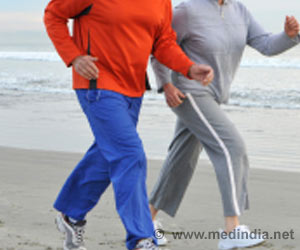Exercise is one of the first lines of treatment recommended for diabetics. Aerobic exercise improves arterial stiffness, vascular reactivity and smooth muscle function.

‘Aerobic exercise, such as brisk walking and cycling appears to have a significantly beneficial effect on the stiffness and the function of the smooth muscles in the arteries.
’





Exercise is one of the first lines of treatment recommended by health professionals to manage the array of complications associated with T2D, such as controlling blood sugar. While it has been consistently shown that exercise is exceptionally beneficial for managing CVD, blood pressure medication is the main treatment used to manage arterial health problems.This new study combined the results of nine randomized controlled clinical trials investigating the effects of exercise in T2D. Kimberley Way, who leads the research, says: "We focused on measures looking at arterial stiffness, vascular reactivity and smooth muscle function, because there is evidence that suggests they are closely associated with disease progression and CVD mortality."
Ms Way states adds: "What we found from our analysis, is that aerobic exercise, such as brisk walking or cycling appears to have a significantly beneficial effect on the stiffness and the function of the smooth muscles in the arteries. This makes our findings very valuable to health professionals, because aerobic exercise can be used as a primary treatment strategy for arterial health, while also assisting with other health complications associated with T2D.”
The findings of the study have been published in Current Diabetes Reviews.
Source-Eurekalert














